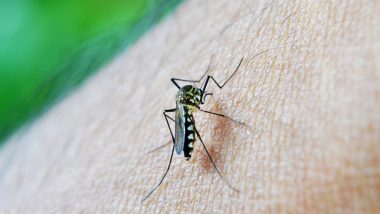London, July 30: Early symptoms indicating a COVID-19 infection varies between age groups and also between men and women, new UK research has found. The study, which was published in ‘The Lancet Digital Health' journal on Thursday, was carried out by researchers at King's College in London using data from the self-reported ZOE COVID Symptom Study app.
They studied 19 symptoms, including the most common ones such as a persistent cough and loss of smell, as well as abdominal pain and blisters on the feet.
“We aimed to estimate the probability of an individual being infected with SARS-CoV-2 (COVID-19) on the basis of early self-reported symptoms to enable timely self-isolation and urgent testing,” the researchers note. Mumbai Doctor Tests Positive For COVID-19 Thrice in 13 Months, Twice After Taking Both Doses of Coronavirus Vaccine.
“Model performance to predict COVID-19 positivity was compared in terms of sensitivity, specificity, and area under the receiver operating characteristic curve (AUC) in the test set,” they said.
As per their findings, in people aged over 60, loss of smell was not significant and it was not at all relevant in people over 80. But these older age groups were more likely to suffer diarrhoea.
For those aged 40 to 59, a persistent cough had a higher relevance to detect COVID-19 and chills or shivers had a lower relevance compared with individuals 80 years or older. Chest pain, unusual muscle pain, shortness of breath, and loss of smell were the most relevant features for people aged 60 to 70.
On the gender variations, men were most likely to report shortness of breath, fatigue, chills and fever. Women were more likely to report loss of smell, chest pain and a persistent cough.
"It's important people know the earliest symptoms are wide-ranging and may look different for each member of a family or household,” said Claire Steves, one of the authors from King's College London. From Pfizer to Covaxin, Here's a Comparison and Efficacy Rates of All COVID-19 Vaccines.
"Testing guidance could be updated to enable cases to be picked up earlier, especially in the face of new variants which are highly transmissible. This could include using widely available lateral flow tests for people with any of these non-core symptoms," she said.
The interpretation of the study concludes that early detection based on this model is crucial to contain the spread of COVID-19 and efficiently allocate medical resources.
(This is an unedited and auto-generated story from Syndicated News feed, LatestLY Staff may not have modified or edited the content body)













 Quickly
Quickly




















